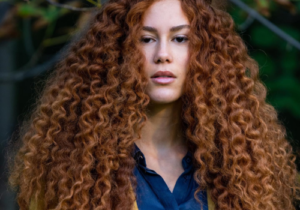Introduction to bleaching black hair
Bleaching black hair is a process that requires expertise and a good understanding of the products and techniques involved. Bleaching black hair can radically transform your look, allowing you to experiment with different shades and styles. But before diving in, it's essential to know the ins and outs to ensure optimal results without damaging your hair. In this article, we'll explore why bleach black hair, what hair bleaching is, and popular reasons why people choose to do it.
Why bleach black hair
What is hair bleaching?
Hair bleaching is a chemical process used to lighten hair by removing natural or artificial pigments. This process prepares the hair to receive a new color, such as light blond or bright color. Bleaching is essential to transform black hair into a lighter palette, as dark pigments are more resistant to simple coloring treatments.
Popular reasons for bleaching black hair
There are many reasons why people choose to bleach their hair black:
- Aesthetic transformation : Many people simply want a radical change of look, going from dark brown or black to a lighter color to refresh their appearance.
- Fancy coloring : Bleaching also allows the application of fancy colors like pink, blue or even pastel shades, which would not be visible on black hair.
- Natural effect: Some people go for a balayage or ombré effect, where the ends of the hair are lighter than the roots, creating depth and volume.
Understanding the hair bleaching process
The basic principles of bleaching
How bleaching works
Bleaching works by using oxidizing agents, such as hydrogen peroxide, to open the hair cuticle and dissolve natural pigments (melanin). The application time and concentration of the product will determine the level of lightening achieved. For black hair, this process may require several sessions to avoid excessive damage.
The challenges of bleaching black hair
Bleaching black hair presents several challenges:
- Risk of damage : Black hair often has a thicker, more robust structure, requiring more aggressive treatments that can weaken hair fibers.
- Unpredictable outcome: Dark pigments can react unpredictably, sometimes resulting in an unwanted orange or yellow color.
- Careful maintenance : Bleached hair requires intensive, regular care to maintain hair health and color vibrancy.
Products required for bleaching
Description of bleaching products
To bleach black hair, several products are essential. Here's a list of the main ones:
- Bleaching powder : Used to remove pigments, it is often mixed with a hair developer to activate the process.
- Developer : Usually containing hydrogen peroxide, this product is crucial for opening the cuticle and dissolving pigments.
- Toner : Applied after bleaching to neutralize unwanted yellow or orange tones.
How to choose the right bleach
Choosing the right products is crucial to successful bleaching:
-
- Professional toning : Over time, bleached hair can lose its shine and adopt undesirable tones. Salon toning can neutralize these tones and revive your hair color.
- In-depth treatments : In-depth salon treatments, such as keratin services or professional moisturizing masks, can nourish and repair your hair more effectively than at home.
- Regular Cup : Schedule regular trims to eliminate split ends and promote the overall health of your hair.Developer focus: A 20-volume developer is generally sufficient for a first attempt on

Steps to bleach black hair
Preparation before bleaching
Preliminary tests and patching
Before you embark on bleaching, it's crucial to carry out preliminary tests to avoid allergic reactions and determine your hair's reaction to the products. Perform a patch test by applying a small amount of product to a discreet section of your scalp. Wait 24 hours to observe any adverse reaction. In addition, a test on a strand of hair can give you an idea of how long it will take to achieve the desired level of discoloration and how your hair will react to the treatment.
Skin and clothing protection
Fading can be a messy process, so taking steps to protect your skin and clothing is essential:
- Neck protector: Use a towel or cape around your neck to prevent the product from staining your clothes.
- Balm or cream : Apply a generous layer of balm or greasy cream around your hairline to protect your skin from chemical irritation.
- Gloves : Wear plastic or latex gloves to protect your hands from aggressive products.
The fading process
Application of bleach
Correct application of the product is vital for uniform results:
- Prepare the solution: Mix the bleaching powder with the developer according to the manufacturer's instructions. Make sure the consistency is homogeneous.
- Sectioning the hair: Divide your hair into sections to facilitate even application. Use clips to secure separate sections.
- Apply from bottom to top: Start by applying the mixture to the tips and lengths before moving on to the roots, as the roots bleach faster due to the heat of the scalp.
- Work fast : The product will start working as soon as it is applied, so work as quickly as possible to avoid uneven discoloration.
Waiting time and rinsing
After application, the waiting time is crucial to obtaining the right shade:
- Follow the recommended time: Follow the manufacturer's recommendations on waiting time. Generally, this varies between 20 and 50 minutes, depending on the intensity of the starting color and the desired result.
- Check regularly : Check color progress every 10 minutes to avoid excessive fading, which can damage your hair.
- Rinse thoroughly: Once the time has elapsed, rinse your hair thoroughly with warm water until all residues of bleach have been removed. Use a mild shampoo to remove any remaining product.
- Packaging : Apply a moisturizing conditioner to soothe hair and cuticle.
See also: How do I bleach my hair?
"`html
After-care
Nourishing and moisturizing bleached hair
The importance of after-care
After bleaching, hair requires intensive care to restore its health and shine. Hair often becomes dry and brittle after bleaching due to the alteration of hair structure by chemicals. The cuticle, which protects the hair cortex, is often damaged, resulting in a loss of protein and moisture. It is essential to compensate for this loss by using moisturizing and nourishing products.
- Use specific products: After bleaching, choose products designed for colored and bleached hair. They contain the right ingredients to keep your hair moisturized and healthy.
- Daily moisturizing : Incorporate daily moisturizers, such as sprays or serums, into your routine to maintain constant hydration.
Regular washing and care
Adopting the right washing routine is crucial for bleached hair:
- Gentle shampoos : Use sulfate-free shampoos to avoid over-drying your hair. Sulfates can strip away natural oils and further dry out already fragile hair.
- Nourishing conditioners : Use a moisturizing conditioner after every wash to soften and nourish hair. Opt for products rich in ingredients such as argan oil, shea butter and keratin.
- Hair masks : Apply a moisturizing hair mask at least once a week. Masks contain nourishing agents that penetrate deep into the hair cortex to repair damage.
- Warm water : Wash your hair in lukewarm rather than hot water to preserve the natural oils and avoid further stressing the hair.
Protect hair from environmental damage
Bleached hair is more vulnerable to external aggressions:
- Heat protection : Limit the use of heated tools such as straightening irons, curling irons and hair dryers. Always use a thermal protector before using any heated appliance.
- Sun protection : UV rays can further damage bleached hair. Wear a hat or use UV protection sprays to protect your hair from the sun.
- Avoid chlorine: Chlorine in swimming pools can dry out and fade the color of bleached hair. Wear a bathing cap or rinse your hair with fresh water before swimming to minimize chlorine absorption.
- Beware of friction: Avoid tight hairstyles that could break your fragile hair. Use silk or satin pillowcases to reduce friction during sleep.
Salon care to maintain color
We recommend that you visit your hairdresser regularly for professional treatments:

Common mistakes and FAQs about bleaching black hair
Common mistakes when bleaching black hair
Underestimation of time and effort required
Many people think that bleaching black hair can be done in a single session. This is often a mistake. Black hair usually requires several sessions to achieve the desired level of bleaching without causing excessive damage. Forcing the process can result in brittle, extremely damaged hair.
Use of inappropriate products
Choosing inferior or inappropriate products for your hair can have disastrous consequences. Inexpensive products may contain harsh ingredients that damage your hair. Always opt for products recommended for black hair and follow the instructions for use.
Ignore post-coloration care
After bleaching, it's crucial to give your hair the attention it needs. Ignoring post-fade care, such as moisturizing and heat protection, can lead to dry, brittle and dull hair. Investing in post-fade hair care is crucial to maintaining the health and beauty of your hair.
No preliminary tests
Skipping patch and strand tests is a common mistake that can lead to allergic reactions or unexpected color results. These tests allow us to check the product's compatibility with your skin and hair, and to anticipate the result of bleaching.
Uneven product application
Uneven application can result in a blotchy or uneven appearance. It's important to divide the hair into sections and apply the bleach evenly to achieve a seamless result. Working quickly but precisely is the key to avoiding this problem.
FAQ about bleaching black hair
Will bleaching damage my hair?
Bleaching can damage your hair, especially if it's already fragile. It's essential to follow instructions, use quality products and provide appropriate after-care to minimize damage.
How long should I wait between bleaching sessions?
We recommend waiting at least two weeks between each bleaching session to allow your hair to recover and minimize damage. During this period, use nourishing hair masks and avoid using heated tools.
Can I bleach my black hair at home?
Yes, you can bleach your black hair at home, but you need to follow the instructions carefully and use the right products. If you have any doubts or very fragile hair, it's best to consult a professional.
Which developer should I use for black hair?
For black hair, a 30-volume developer is often recommended, but this depends on the condition and texture of your hair. Start with a lower volume and adjust as needed, while avoiding damaging your hair too much.
How to avoid uneven discoloration?
To avoid uneven discoloration, apply the product evenly in thin sections. Work quickly and methodically, and make sure each strand is saturated with product. Calling in a friend or hairdresser can also help ensure even application.





